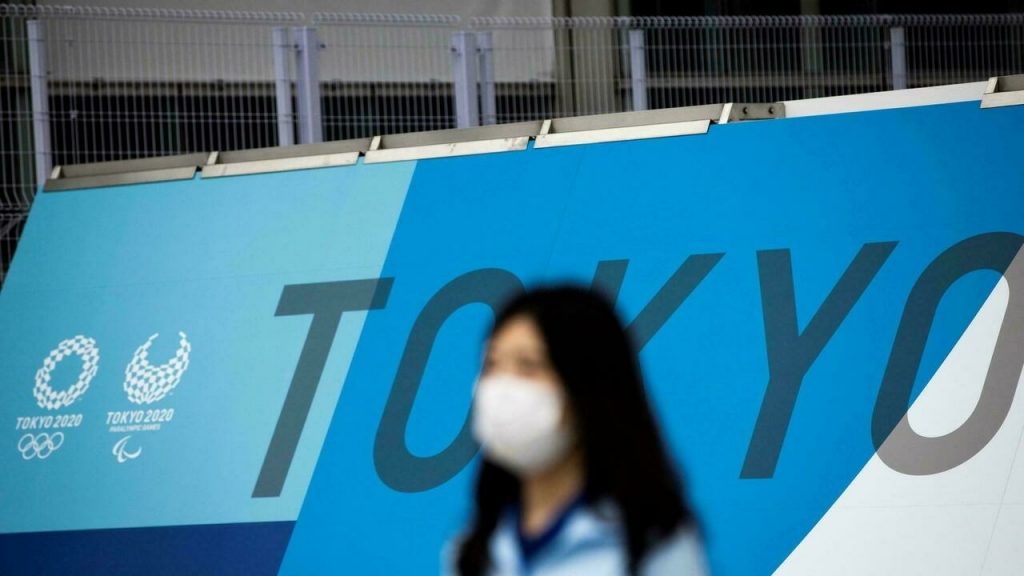
JO-2020: How Japan fought the coronavirus
Posted in: the average :
Tokyo (AFP)
From a source of pollution aboard a ship to the saga of the postponement of the Tokyo Olympics that will open on Friday, Japan’s fight against the pandemic was very early on in the center of international attention.
First cited as a model and then criticized for being slow in the face of Covid-19, the Japanese archipelago has so far recorded about 15,000 deaths, far fewer than in many other countries, while avoiding strict restrictions imposed elsewhere.
Japan was one of the first countries outside of China to detect a case of Covid-19 and to start testing people coming from Wuhan very early on. But the outbreak took another turn in February 2020 when the Diamond Princess cruise ship was quarantined off Yokohama, near Tokyo.
With hundreds of passengers and crew members infected with the virus and 13 people dead, Japanese authorities have come under fire for demanding that they all remain quarantined on the ship, as the virus has been spreading.
On Japanese soil, the government has called on residents to stay at home if they show symptoms of Covid-19, while limiting testing, a decision that has been the subject of fierce debate.
As the pandemic worsened, the unthinkable happened: in March 2020, the Olympics were postponed, for the first time in peacetime. Then a state of emergency was declared in Tokyo, before it was extended to the entire country.
– Slow vaccination –
This measure, which did not take the form of a total lockdown imposed elsewhere in the world, essentially called on people to stay at home, with no real punishment for violators.
# photo 1
When the first state of emergency ended in May 2020, people resumed a more or less normal life, continuing to observe a certain regime and wear a mask in all circumstances, while the Japanese border remained closed to foreigners.
By the summer of 2020, the situation seemed to be under control, with government campaigns even encouraging in-country travel and dining out.
But like elsewhere, winter hit hard and a second emergency ensued in January 2021. Restrictions remained in place for most of the lead up to the Olympics.
The deteriorating health situation fueled growing opposition to the Olympics and rumors of cancellation spread widely before it was rejected.
While vaccination began in the United States and Great Britain, things progressed much more slowly in Japan, the world’s third largest economy, due in particular to regulatory problems.
Pfizer’s formula wasn’t approved until mid-February after clinical trials in Japan itself, and vaccinations began with caution, first for medical staff, then for the elderly.
The pace accelerated from May. However, one week before the opening of the Olympics, only 20% of the population of Japan was fully vaccinated and organizers decided to ban spectators from almost all Olympic stadiums for the first time in the history of the Games. resumption of the epidemic.
– ‘Single effort’ –
According to experts, Japan has benefited from the fact that it has prepared its people for such a virus. “People were not hesitant to wear masks. The public already had basic hygiene knowledge and practices,” Haruo Ozaki, president of the Tokyo Medical Association, told AFP.
# photo 2
But there were loopholes, according to Kenji Shibuya, a public health expert who is highly critical of the health response by Japanese authorities.
“The government relied a lot on individual effort, rather than offering scientific approaches, including testing and vaccination,” says Shibuya, who left important medical duties in the UK to come to run a vaccination center in Fukushima.
Ozaki said Japan’s response has also been hampered by the lack of an independent infectious disease agency or system to quickly secure hospital beds.
Mr Shibuya said people’s willingness to take responsibility for containing the infection waned as the crisis dragged on. Now “there is growing frustration”.
© 2021 AFP

“Organizer. Social media geek. General communicator. Bacon scholar. Proud pop culture trailblazer.”
